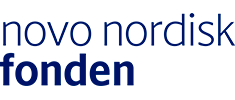Emilie Gertz Ph.D defence
Outside on the inside
Defendant: Emilie Gertz
Project page:
https://www.ind.ku.dk/projekter/kvinder-matematik-naturvidenskab/
Abstract:
Ensuring viable educational pathways for all – regardless of gender, ethnicity or socioeconomic background – is a matter of social justice that requires equitable resources, opportunities and support. Despite this, women and minorities remain underrepresented in post-compulsory science, technology, engineering and mathematics (STEM) disciplines across many Western countries. This persistent gap highlights the need to examine key transition points, with upper secondary school being a critical stage for understanding why many choose not to pursue STEM. In this context, it is essential to explore how young women experience mathematics and science to uncover mechanisms of inclusion and exclusion, and this thesis investigates the factors shaping young women’s identities in relation to science and mathematics throughout upper secondary school as well as how these identities are intertwined with their thoughts on the future. The findings are based on a qualitative longitudinal approach, primarily centered on narrative individual interviews with 32 young women in upper secondary school. These findings are presented across five articles, each offering a unique perspective on the overarching research aim.
The first article focuses on the young women’s mathematics identities during the first year of upper secondary school. The findings reveal that their identities were primarily shaped by intuitive understanding and logical thinking, with minimal emphasis on playfulness or creativity. Additionally, individualism was strongly valued, alongside a rigorous focus on obtaining correct answers while adhering to hierarchical learning structures. This highlights an idealized, narrow pathway to identifying with mathematics – one that privileges those who can consistently produce correct answers. Furthermore, differences was found in how the young women saw themselves as either hardworking or as naturally gifted in mathematics. Acknowledging these differences offers a more nuanced understanding of how successful young women develop their mathematical identities.
The second article explores the young women’s physics identities during the first year of upper secondary school. The findings indicate that a significant number of young women faced marginalization in having their interest in physics acknowledged, while simultaneously experiencing physics learning as instrumental and lacking meaning. Only a small group were able to develop a sense of identity, largely due to perceived similarities between physics and mathematics. This highlights the need for critical reflection on who is recognized as knowledgeable and what is defined as knowledge within the physics classroom, as well as examining the role of mathematics in physics and exploring what physics could be without mathematics.
The third article focuses on the interplay between culture and agency in science and mathematics for young women halfway through upper secondary school. The findings reveal that the young women experienced that gender norms and the institutional culture produced them as good students, leading them to negotiate and assign different meanings to learning science and mathematics. Meanwhile, performing oneself as young women appeared incompatible with being recognized as top performers in science and mathematics. The findings call for reflections on how to make science and mathematics more inclusive by recognizing a diverse range of students. They also highlight a need to examine how teachers may unintentionally reproduce gender norms in their teaching, as well as calling for greater awareness of how gender norms shape not only learning environments but also institutions and society more broadly.
The fourth article explores the young women’s imagined futures and how these imaginings and negotiations are interwoven with experiences in science and mathematics. The findings show, first, that only a few of the young women imagined a future in STEM, and second, that resources – or the lack thereof – are deeply intertwined with what one considers it is possible to imagine. Overall, gendered expectations of self-education shaped the young women’s narratives, while performing masculinities and aligning oneself with notions of cleverness remained largely accessible only to (White) middle-class women. On a more positive note, the findings suggest that by their final year of upper secondary school, many young women still view their future as open and flexible.
The fifth and final article focuses on the longitudinal identity negotiations within upper secondary school physics and mathematics. The findings show struggles with aligning interests and identity-work with the norms and practices within the disciplines. They show that bonding with the teacher was made possible through narrowly defined masculine strategies. Consequently, reconciling one’s own gender identity with the “real” student identity in the subjects seemed difficult. Conforming to the learning culture implied submitting to a “sink or swim” culture that amplified insecurities and a sense of inadequacy. Collectively, these factors discouraged the women from sustaining meaningful narratives and limited their ability to explore positive career considerations within STEM fields. This underscores the need for a more gender-inclusive learning environment.
Supported by:

